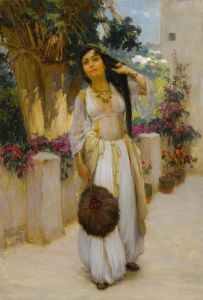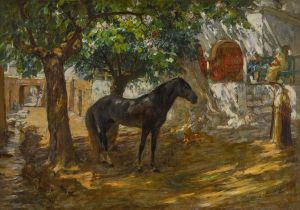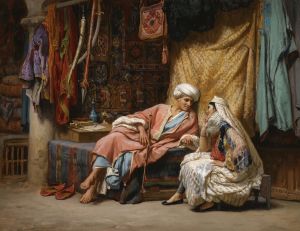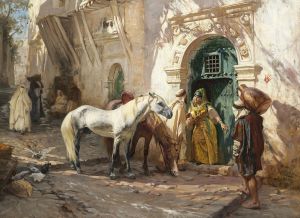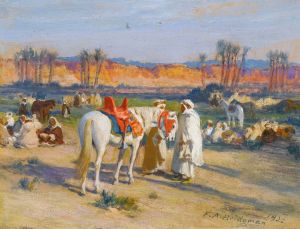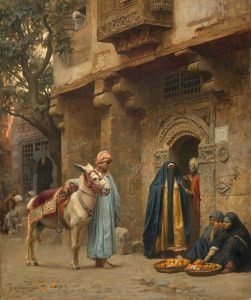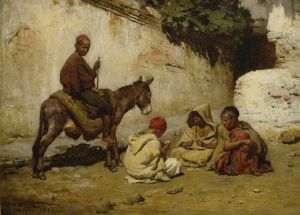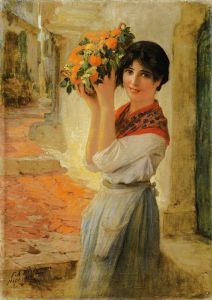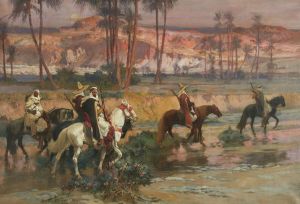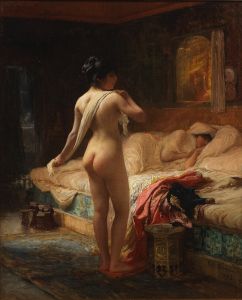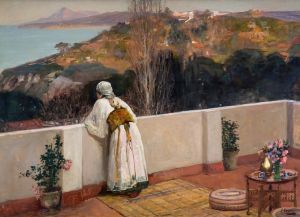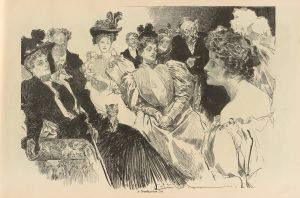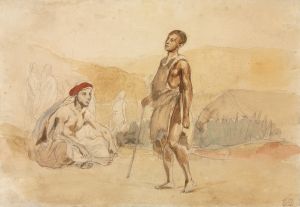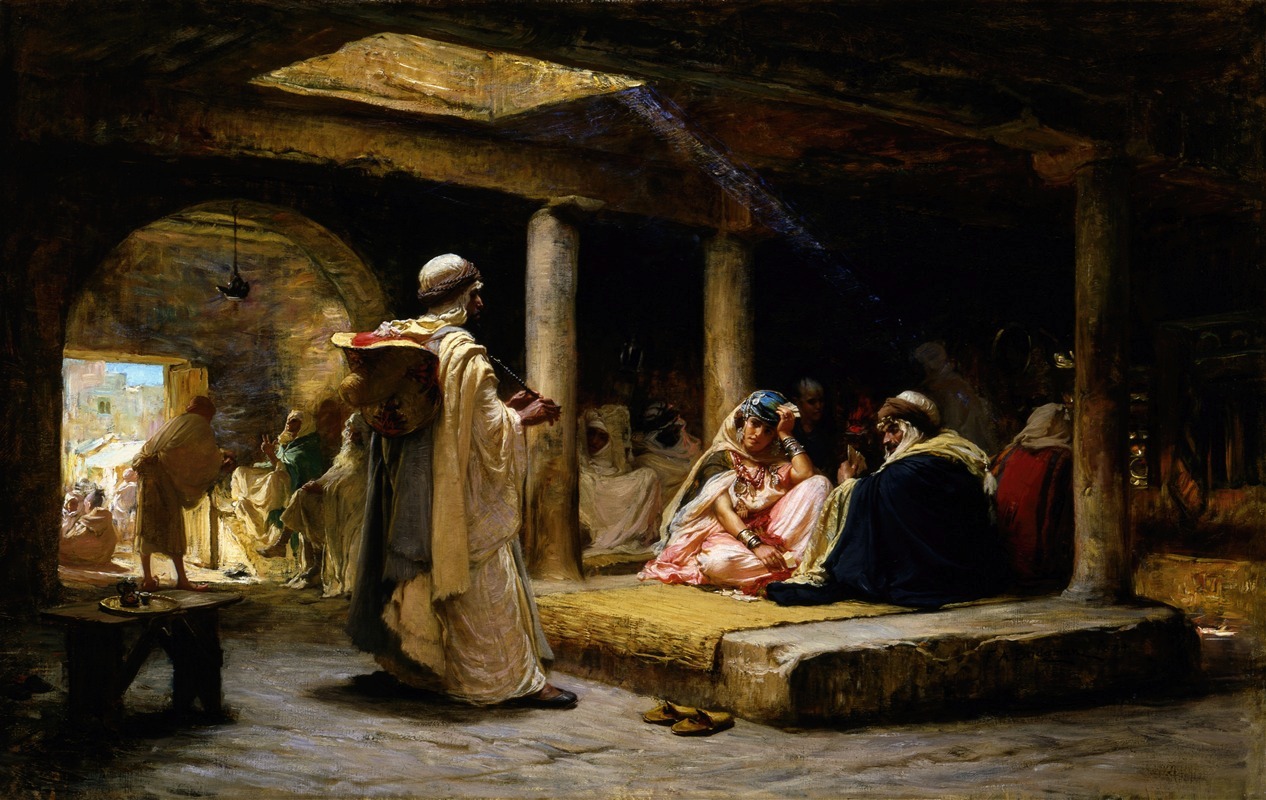
Cafe at Biskra, Algeria
A hand-painted replica of Frederick Arthur Bridgman’s masterpiece Cafe at Biskra, Algeria, meticulously crafted by professional artists to capture the true essence of the original. Each piece is created with museum-quality canvas and rare mineral pigments, carefully painted by experienced artists with delicate brushstrokes and rich, layered colors to perfectly recreate the texture of the original artwork. Unlike machine-printed reproductions, this hand-painted version brings the painting to life, infused with the artist’s emotions and skill in every stroke. Whether for personal collection or home decoration, it instantly elevates the artistic atmosphere of any space.
Frederick Arthur Bridgman was an American artist known for his Orientalist paintings, which often depicted scenes from North Africa and the Middle East. One of his works, "Cafe at Biskra, Algeria," captures a moment in the daily life of the Algerian town of Biskra. Bridgman, born in 1847 in Tuskegee, Alabama, moved to Paris in 1866 to study art and became associated with the Orientalist movement, which was characterized by Western artists' fascination with the cultures and landscapes of the East.
Biskra, located in northeastern Algeria, was a popular destination for European travelers and artists in the 19th century due to its exotic appeal and unique landscape. The town, often referred to as the "Gateway to the Sahara," offered a rich tapestry of cultural and visual elements that attracted artists like Bridgman. His painting "Cafe at Biskra, Algeria" reflects his interest in capturing the essence of everyday life in this region.
In this painting, Bridgman employs his characteristic attention to detail and vibrant color palette to depict a scene in a local café. The composition likely includes figures engaged in conversation or leisure, surrounded by the architectural and decorative elements typical of the region. Bridgman's work is known for its ethnographic detail, as he often included accurate representations of clothing, architecture, and other cultural aspects in his paintings.
Bridgman's approach to Orientalism was somewhat different from his contemporaries. While many Orientalist artists focused on romanticized or exoticized depictions, Bridgman often sought to portray his subjects with a degree of authenticity and respect. His time spent traveling in North Africa and the Middle East provided him with firsthand experiences that informed his work. Bridgman made several trips to Algeria, Egypt, and other parts of the region, sketching and painting scenes that captured the diverse cultures and landscapes he encountered.
"Cafe at Biskra, Algeria" is a testament to Bridgman's skill in rendering light and atmosphere, as well as his ability to convey the vibrancy of life in Biskra. The painting likely features the interplay of light and shadow, a technique Bridgman used to enhance the realism and mood of his scenes. His use of color and composition would have been intended to draw the viewer into the scene, offering a glimpse into a world that was both foreign and fascinating to Western audiences of the time.
Bridgman's work, including "Cafe at Biskra, Algeria," contributed to the broader Orientalist movement by providing Western audiences with images of distant lands and cultures. While Orientalism as a genre has been critiqued for its colonialist undertones and often stereotypical portrayals, Bridgman's paintings are appreciated for their artistic merit and the insight they provide into 19th-century perceptions of the East.
Overall, "Cafe at Biskra, Algeria" exemplifies Frederick Arthur Bridgman's dedication to capturing the beauty and complexity of the places he visited. His work remains a valuable part of the Orientalist canon, offering a window into the historical interactions between Western artists and the cultures they sought to depict.





